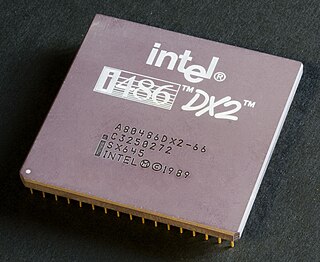 W
WA central processing unit (CPU), also called a central processor, main processor or just processor, is the electronic circuitry within a computer that executes instructions that make up a computer program. The CPU performs basic arithmetic, logic, controlling, and input/output (I/O) operations specified by the instructions in the program. This contrasts with external components such as main memory and I/O circuitry, and specialized processors such as graphics processing units (GPUs).
 W
WIn a computer's central processing unit (CPU), the accumulator is a register in which intermediate arithmetic and logic results are stored.
 W
WThe address generation unit (AGU), sometimes also called address computation unit (ACU), is an execution unit inside central processing units (CPUs) that calculates addresses used by the CPU to access main memory. By having address calculations handled by separate circuitry that operates in parallel with the rest of the CPU, the number of CPU cycles required for executing various machine instructions can be reduced, bringing performance improvements.
 W
WIn computing, an arithmetic logic unit (ALU) is a combinational digital circuit that performs arithmetic and bitwise operations on integer binary numbers. This is in contrast to a floating-point unit (FPU), which operates on floating point numbers. It is a fundamental building block of many types of computing circuits, including the central processing unit (CPU) of computers, FPUs, and graphics processing units (GPUs).
 W
WIn computer engineering, computer architecture is a set of rules and methods that describe the functionality, organization, and implementation of computer systems. Some definitions of architecture define it as describing the capabilities and programming model of a computer but not a particular implementation. In other definitions computer architecture involves instruction set architecture design, microarchitecture design, logic design, and implementation.
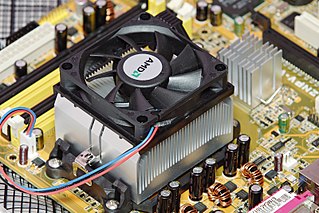 W
WComputer cooling is required to remove the waste heat produced by computer components, to keep components within permissible operating temperature limits. Components that are susceptible to temporary malfunction or permanent failure if overheated include integrated circuits such as central processing units (CPUs), chipsets, graphics cards, and hard disk drives.
 W
WA coprocessor is a computer processor used to supplement the functions of the primary processor. Operations performed by the coprocessor may be floating point arithmetic, graphics, signal processing, string processing, cryptography or I/O interfacing with peripheral devices. By offloading processor-intensive tasks from the main processor, coprocessors can accelerate system performance. Coprocessors allow a line of computers to be customized, so that customers who do not need the extra performance do not need to pay for it.
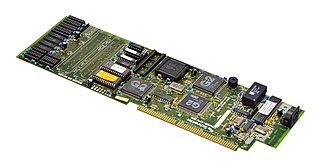 W
WA CPU card is a printed circuit board (PCB) that contains the central processing unit (CPU) of a computer. CPU cards are specified by CPU clock frequency and bus type as well as other features and applications built into the card.
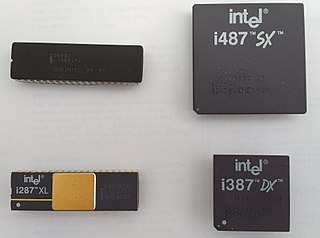 W
WA floating-point unit is a part of a computer system specially designed to carry out operations on floating-point numbers. Typical operations are addition, subtraction, multiplication, division, and square root. Some FPUs can also perform various transcendental functions such as exponential or trigonometric calculations, but the accuracy can be very low, so that some systems prefer to compute these functions in software.
 W
WAn index register in a computer's CPU is a processor register or assigned memory location used for modifying operand addresses during the run of a program. This proved useful for doing vector/array operations and in commercial data processing for navigating from field to field within records. In both uses index registers substantially reduced the amount of memory used and increased execution speed.
 W
WA memory management unit (MMU), sometimes called paged memory management unit (PMMU), is a computer hardware unit having all memory references passed through itself, primarily performing the translation of virtual memory addresses to physical addresses.
 W
WIn computer central processing units, micro-operations are detailed low-level instructions used in some designs to implement complex machine instructions.
 W
WIn computer engineering, microarchitecture, also called computer organization and sometimes abbreviated as µarch or uarch, is the way a given instruction set architecture (ISA) is implemented in a particular processor. A given ISA may be implemented with different microarchitectures; implementations may vary due to different goals of a given design or due to shifts in technology.
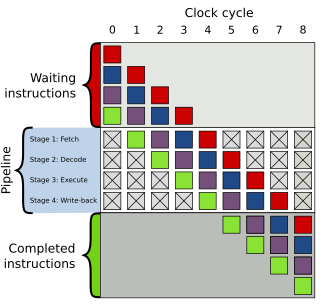 W
WMinimal instruction set computer (MISC) is a central processing unit (CPU) architecture, usually in the form of a microprocessor, with a very small number of basic operations and corresponding opcodes, together forming an instruction set. Such sets are commonly stack-based rather than register-based to reduce the size of operand specifiers.
 W
WIn computer architecture, multithreading is the ability of a central processing unit (CPU) to provide multiple threads of execution concurrently, supported by the operating system. This approach differs from multiprocessing. In a multithreaded application, the threads share the resources of a single or multiple cores, which include the computing units, the CPU caches, and the translation lookaside buffer (TLB).
 W
WThe program counter (PC), commonly called the instruction pointer (IP) in Intel x86 and Itanium microprocessors, and sometimes called the instruction address register (IAR), the instruction counter, or just part of the instruction sequencer, is a processor register that indicates where a computer is in its program sequence.
 W
WIn computer engineering, register windows are a feature in some instruction set architectures to improve the performance of procedure calls, a very common operation. Register windows were one of the main features of the Berkeley RISC design, which would later be commercialized as the AMD Am29000, Intel i960, Sun Microsystems SPARC, and Intel Itanium.
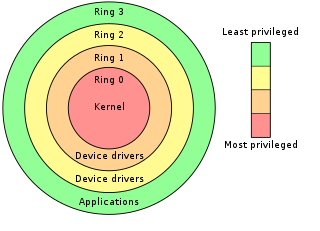 W
WIn computer science, hierarchical protection domains, often called protection rings, are mechanisms to protect data and functionality from faults and malicious behavior. This approach is diametrically opposite to that of capability-based security.
 W
WTRIPS was a microprocessor architecture designed by a team at the University of Texas at Austin in conjunction with IBM, Intel, and Sun Microsystems. TRIPS uses an instruction set architecture designed to be easily broken down into large groups of instructions (graphs) that can be run on independent processing elements. The design collects related data into the graphs, attempting to avoid expensive data reads and writes and keeping the data in high speed memory close to the processing elements. The prototype TRIPS processor contains 16 such elements. TRIPS hoped to reach 1 TFLOP on a single processor, as papers were published from 2003 to 2006.